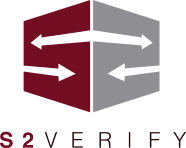Design an Internship Program that Boosts Your Talent Pipeline
ICYMI: recent grads are valuable hires for all employers. That’s because they bring unparalleled digital literacy, improved engagement, increased diversity, and cost savings—among other benefits—to companies via entry-level positions.
But, what’s even better than a recent grad when it comes to hiring? A recent grad who was once an intern—an intern-turned-employee.
The Value of Internships
Internships help employers expand their workforce when they need additional support so that permanent employees can focus on more creative, conceptual, or advanced projects. And, while it’s important to pay them, interns are certainly a more affordable option than bringing on additional full-time resources (think: fractional employees or gig workers).
When designed thoughtfully and purposefully to develop future talent, internship programs fill employers’ talent pools with engaged, entry-level professionals who can fill roles and succeed staff across the talent map. These candidates come equipped with institutional knowledge, a shortened learning curve, and an understanding of the brand and culture.
In fact, internships are a pretty foolproof way to screen for cultural fitness since those who mesh with the company culture are more likely to return. It can also be a great time to help junior employees practice their management skills before they get promoted to a manager position.
The Secret to Designing an Effective Internship Program
To create an internship program that attracts and retains top talent, employers and HR professionals need to center the intern experience—they need to think more about how the program benefits the interns than it does the business.
The secret to designing an effective internship program is all about expanding the company’s understanding of the employee lifecycle.
The employee lifecycle refers to the various stages an employee goes through during their tenure with an organization, from the recruitment stage to separation; it encompasses the entire journey and experiences of an employee within the company.
Understanding the employee lifecycle helps organizations effectively manage and support their workforce at each stage—through the right interventions, employers can maximize employee productivity, team morale, satisfaction, and overall organizational success.
By thinking of the internship program as the first stage of the employee lifecycle, employers and HR professionals can easily apply the same logic and similar strategy they use to engage employees at other stages of the employee lifecycle—making interns more likely to come back and more likely to recommend the program to a friend.
Create Meaningful Roles
The first way to optimize the employee lifecycle at the internship stage is to design roles that provide interns with meaningful professional experiences.
Interns take internship positions to grow their skills and experience in a particular field or career path—not to get coffee or fill Excel sheets. By offering challenging, meaningful work, employers can keep top talent and help them develop the skills that will ultimately benefit the organization in the long run.
Establish Mentorship and Training Programs
On that note, another way to help interns develop their skills and stay engaged at the internship stage is to offer mentorship and training opportunities. HR professionals should assign experienced employees to interns to provide guidance, feedback, and the chance to learn from seasoned professionals. Mentors are also an effective way to help interns feel connected to company culture.
Plus, interns should have access to workshops, courses, and other professional development opportunities that enhance their learning experience and create a work environment that makes them feel like they’ll be truly supported if they choose to come back.
Pay Interns (And Pay Them Well)
While internships are often associated with low or unpaid positions, offering competitive compensation and benefits can help employers stand out to top talent.
A fair stipend, health benefits, and access to company perks can make an internship program more attractive and accessible to a wider pool of candidates—especially those with socioeconomic disadvantages.
Paid interns are more likely to be committed and motivated, resulting in higher quality work that drives key business metrics. Plus, when an organization compensates its interns, it sends a message that intern contributions are valuable, boosting morale, productivity, and retention. Paid interns are 32% more likely to stick with the company and accept a permanent job offer.
Engage In Campus Recruiting
Building a strong campus presence by attending career fairs, hosting information sessions, and building relationships with professors and career services departments can help employers identify and attract the right candidates.
Employers looking to improve diversity in their talent pipelines can connect with certain student groups on campus, making outreach more targeted; employers looking for more technical skills in their pipeline can target certain institutions with strong programs in their field.
Stay In Touch
Part of the internship stage of the employee lifecycle includes the downtime between completing the internship program and the job offer. There’s no telling what opportunities could come their way during that time off, so staying in touch and keeping them engaged during the lull is important.
For interns that already have a job offer, it’s still important to keep them “warm” so that they can onboard as smoothly as possible after graduation. And, if you don’t plan on offering a job to interns, it’s still best practice to keep communications going in case you want to reconnect in the future.
Mentors can be a great channel for continuing the relationship; they can share articles, videos, and other resources about the intern’s interests. HR professionals can launch an intern newsletter and share other exciting company news. Employers can even invite interns to work on one-off company projects in the interim.
Evaluate and Adapt
Continuous improvement is essential for any successful internship program. Regularly collect feedback from interns, managers, and mentors to identify areas for improvement. Use this feedback to adapt and refine the program, ensuring it remains attractive to top talent.
Designing Your Internship Program
For more insights into attracting and retaining recent grads and developing a quality internship program, check out this week’s episode of America Back to Work: Expert Interview Series.
We sat down with Brien Convery, a purpose-driven, people-centric talent executive with decades of global transformational change and values-based leadership experience in various disciplines and industries.
Convery is a published thought leader, TEDx speaker, and podcaster who has been featured in many publications, books, and magazines. He has received numerous honors and awards for his work and passion for supporting talent and their careers—especially early ones.
Click here to listen to or watch the episode—and be sure to subscribe so you never miss another one.







